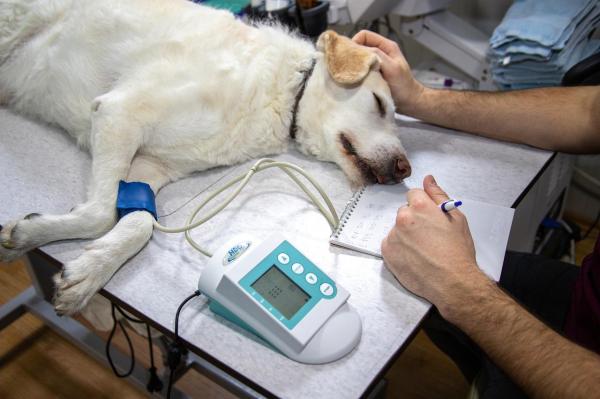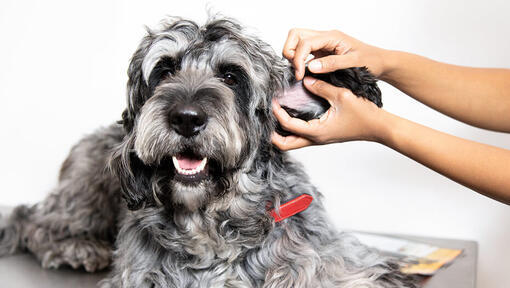A Guide to Detecting Diabetes in Dogs Early On
Diabetes is a persistent condition that influences people as well as our darling shaggy mates. In canines, diabetes mellitus is a pervasive endocrine problem that can essentially affect their wellbeing and personal satisfaction whenever left untreated. Early location assumes a urgent part in dealing with this condition really, guaranteeing that your canine can carry on with a solid, dynamic, and blissful life. This far reaching guide investigates the causes, side effects, demonstrative cycle, and the board of diabetes in canines, outfitting animal people with the information expected to recognize and address this condition in its beginning phases.
Grasping Canine Diabetes
What Is Diabetes in Canines?
Diabetes mellitus in canines is a metabolic problem portrayed by a powerlessness to manage glucose levels. This happens because of an absence of insulin creation by the pancreas or the body's failure to successfully utilize insulin. There are two essential sorts of diabetes in canines:
Type 1 Diabetes (Insulin-Subordinate Diabetes Mellitus): This is the most well-known type in canines and happens when the pancreas can't deliver adequate insulin.
Type 2 Diabetes (Non-Insulin-Subordinate Diabetes Mellitus): This structure is more extraordinary in canines and results from the body's failure to appropriately answer insulin.
Why Early Recognition Matters
Early recognition of diabetes is fundamental to forestall confusions, for example,
Waterfalls prompting visual deficiency.
Kidney sickness.
Neuropathy.
Expanded defenselessness to contaminations.
Ketoacidosis, a possibly lethal condition.
When analyzed early, diabetes can be overseen really with a mix of prescription, diet, and way of life changes.
Causes and Chance Elements
Hereditary Inclination
Certain varieties are more inclined to creating diabetes, including:
Poodles
Dachshunds
Beagles
Brilliant Retrievers
Small scale Schnauzers
Weight
Overweight canines have a higher gamble of creating diabetes because of expanded insulin opposition.
Age and Orientation
Moderately aged to senior canines (normally 6 years or more seasoned) are more helpless.
Female canines, especially those that are unspayed, are at a higher gamble than guys.
Basic Medical issue
Conditions like pancreatitis, Cushing's sickness, and hormonal lopsided characteristics can add to the beginning of diabetes.
Diet and Way of life
Low quality eating regimens high in starches and absence of activity can expand the gamble of diabetes in canines.
Early Indications of Diabetes in Canines
Recognizing diabetes early requires cautiousness. Here are the most well-known early side effects to look for:
1. Expanded Thirst (Polydipsia)
Canines with diabetes frequently hydrate. On the off chance that your canine is drinking more than expected or oftentimes visiting their water bowl, it very well may be an early sign.
2. Expanded Pee (Polyuria)
Successive pee, remembering mishaps for the house, is another normal side effect. This happens on the grounds that overabundance glucose in the circulation system maneuvers water into the pee.
3. Unexplained Weight reduction
Notwithstanding eating a typical or expanded measure of food, diabetic canines might get thinner as their bodies can't use glucose really for energy.
4. Expanded Appetite (Polyphagia)
A diabetic canine might show up continually hungry on the grounds that their cells are famished for energy notwithstanding satisfactory food consumption.
5. Torpidity
Assuming your canine appears to be strangely drained or less dynamic, it could show that their body is attempting to keep up with energy levels.
6. Overcast Eyes (Waterfalls)
Now and again, waterfalls might foster early, prompting shady eyes and potential vision misfortune.
7. Sweet-Smelling Breath
A fruity or sweet smell on your canine's breath can be an indication of diabetic ketoacidosis, a serious confusion of diabetes.
8. Skin and Coat Issues
Diabetic canines might foster dry, flaky skin or dull, diminishing coats because of basic metabolic awkward nature.
The most effective method to Analyze Diabetes in Canines
Veterinary Assessment
Assuming that you notice any of the above side effects, counsel your veterinarian right away. The analytic interaction ordinarily incorporates:
Clinical History and Actual Assessment
Your vet will get some information about your canine's side effects, diet, and way of life.
An actual test will check for signs like weight reduction and lack of hydration.
Blood Tests
Blood Glucose Levels: Raised glucose levels are a key marker.
Fructosamine Test: Measures normal glucose levels more than 2-3 weeks.
Urinalysis
Recognizes glucose and ketones in the pee, which are demonstrative of diabetes.
Extra Tests
Tests for fundamental circumstances like pancreatitis or Cushing's infection.
Overseeing Diabetes in Canines
Insulin Treatment
Most diabetic canines require everyday insulin infusions to manage their glucose levels. Your vet will decide the fitting sort and measurement of insulin.
Dietary Changes
A reasonable, low-carb, high-fiber diet can assist with settling glucose levels. Consider:
Solution diabetic weight control plans.
Home-prepared feasts (with veterinary direction).
Steady taking care of timetables.
Work-out Daily practice
Standard, moderate activity keeps a sound weight and further develops insulin responsiveness. Keep away from demanding action, as it can cause glucose changes.
Observing Glucose Levels
Home Testing: Utilize a glucometer to screen your canine's glucose levels routinely.
Perception: Monitor side effects and conduct changes.
Veterinary Check-Ups: Ordinary vet visits are fundamental to change treatment depending on the situation.
Forestalling Diabetes in Canines
Keep a Solid Weight
Forestall weight by taking care of your canine a fair eating regimen and guaranteeing standard activity.
Fix Female Canines
Unspayed females are at a higher gamble of diabetes because of hormonal vacillations.
Screen for Chance Elements
Remain cautious in the event that your canine is a high-risk breed or has a background marked by pancreatitis or other endocrine problems.
Ordinary Veterinary Consideration
Standard check-ups can assist with distinguishing early indications of diabetes and other medical problems.
Living with a Diabetic Canine
Really focusing on a diabetic canine requires responsibility, however with the right methodology, your pet can carry on with a satisfying life. Here are a few hints:
Make a Daily schedule
Stick to predictable taking care of, insulin organization, and exercise plans.
Teach Yourself
Find out about diabetes the board, expected inconveniences, and how to answer crises like hypoglycemia.
Offer Close to home Help
Persistence and understanding go quite far in keeping your canine agreeable and peaceful.
Associate with Others
Join online networks or care groups for pet people overseeing canine diabetes.
End
Early identification of diabetes in canines can have a massive effect in their guess and personal satisfaction. By remaining educated, noticing your pet intently, and looking for brief veterinary consideration, you can deal with this condition really and guarantee your shaggy companion appreciates numerous blissful, solid years close by.



